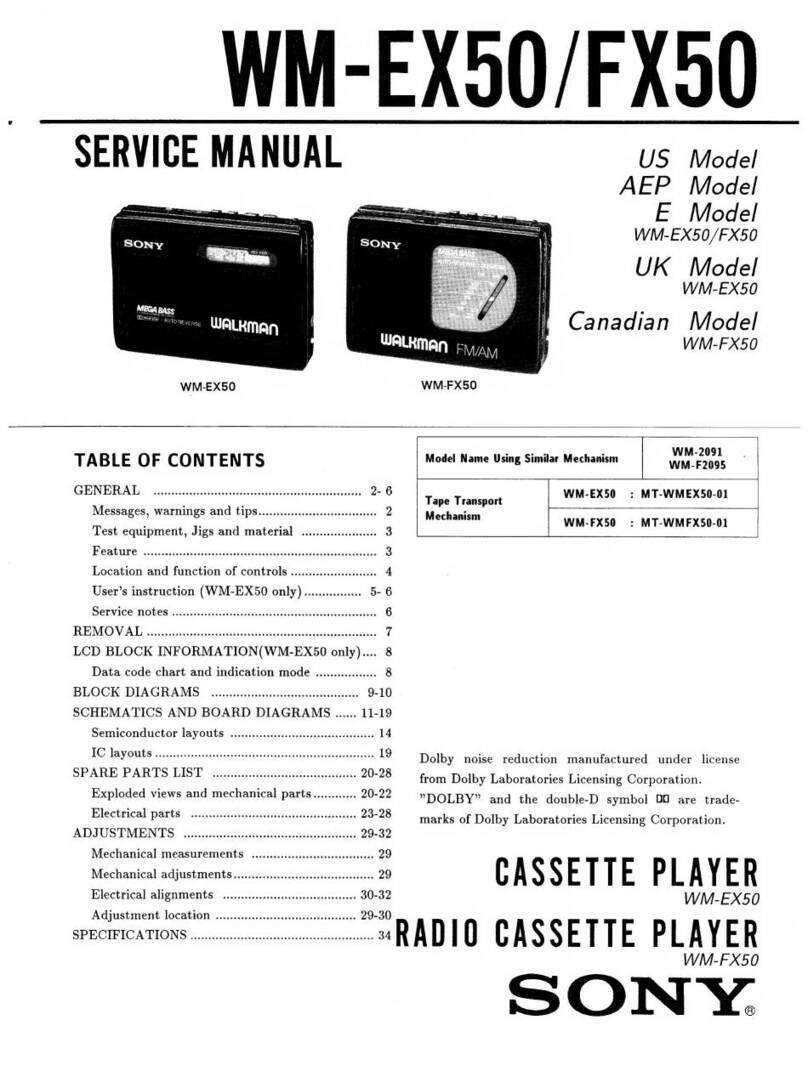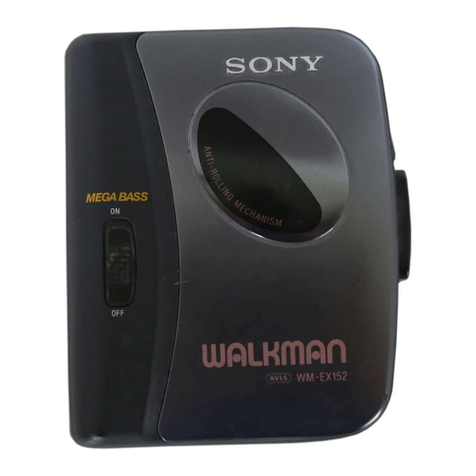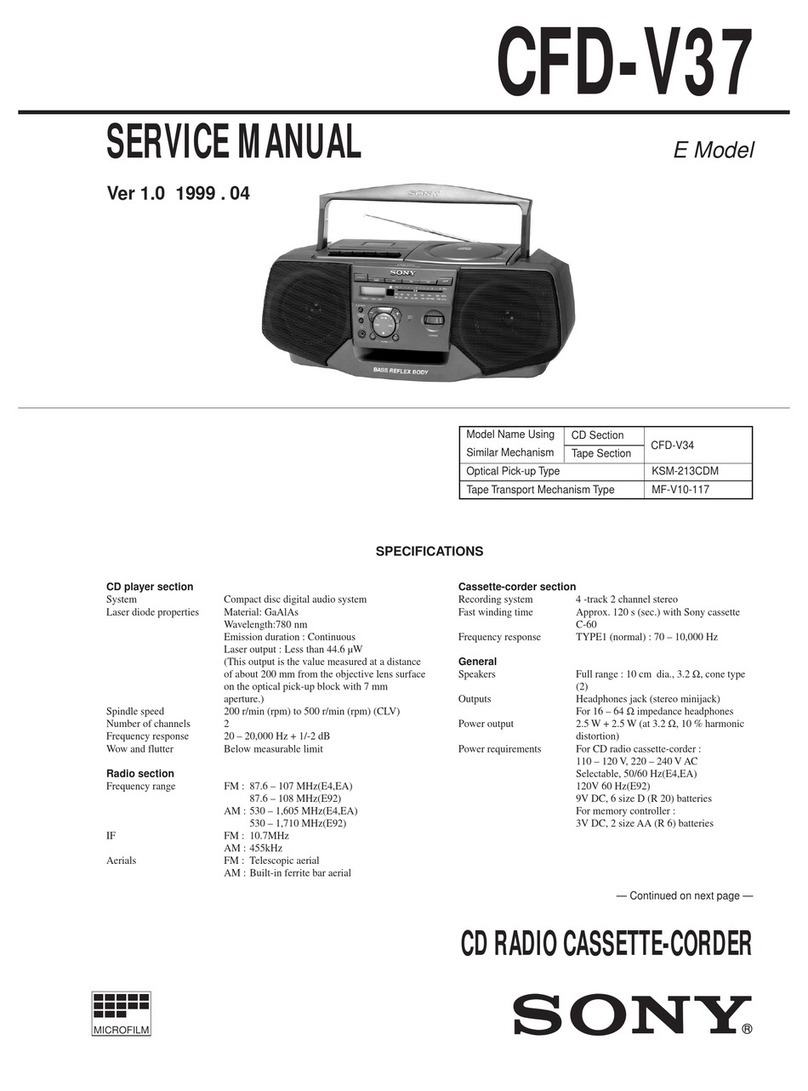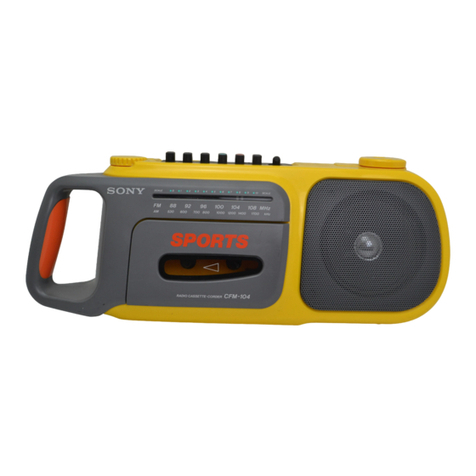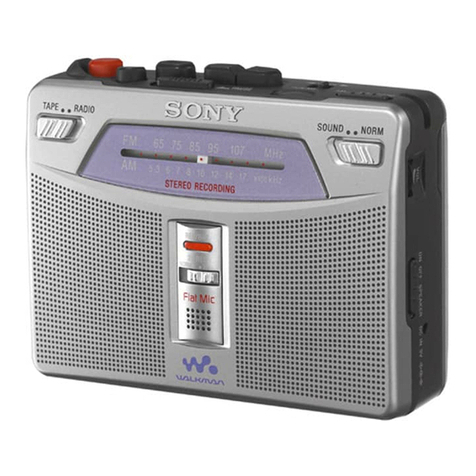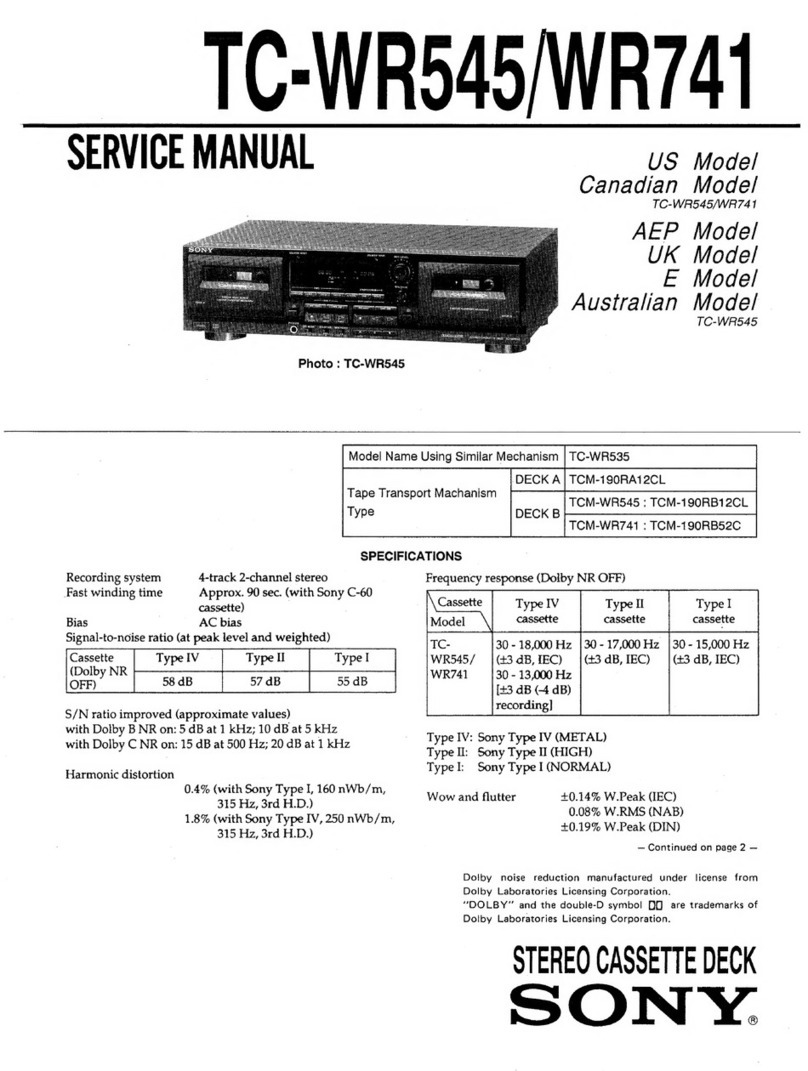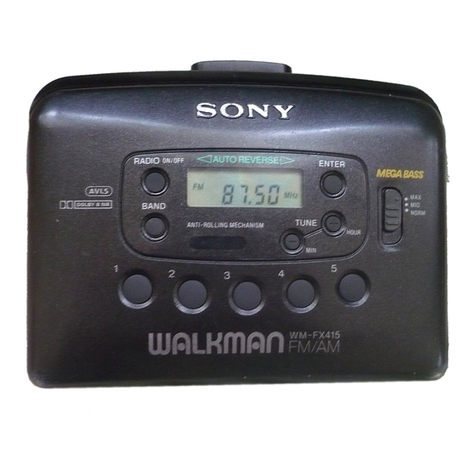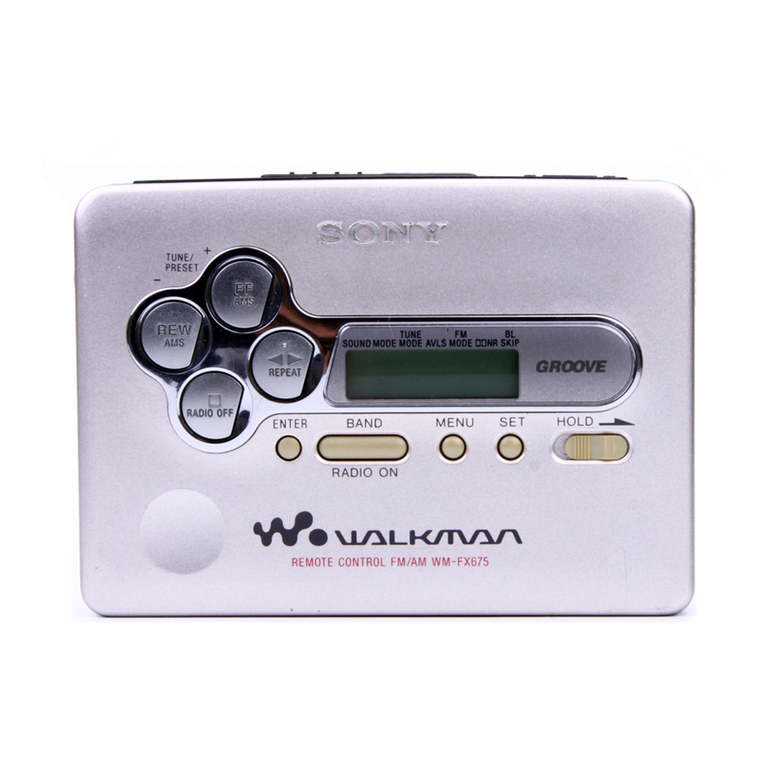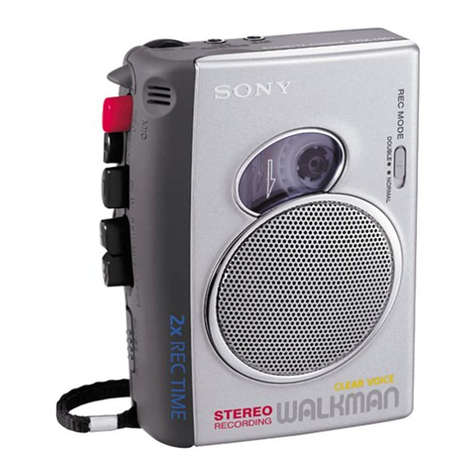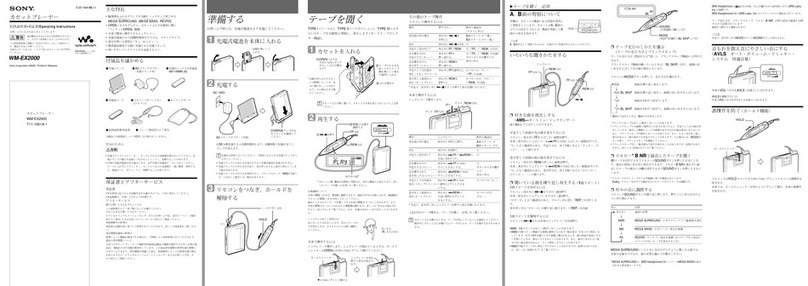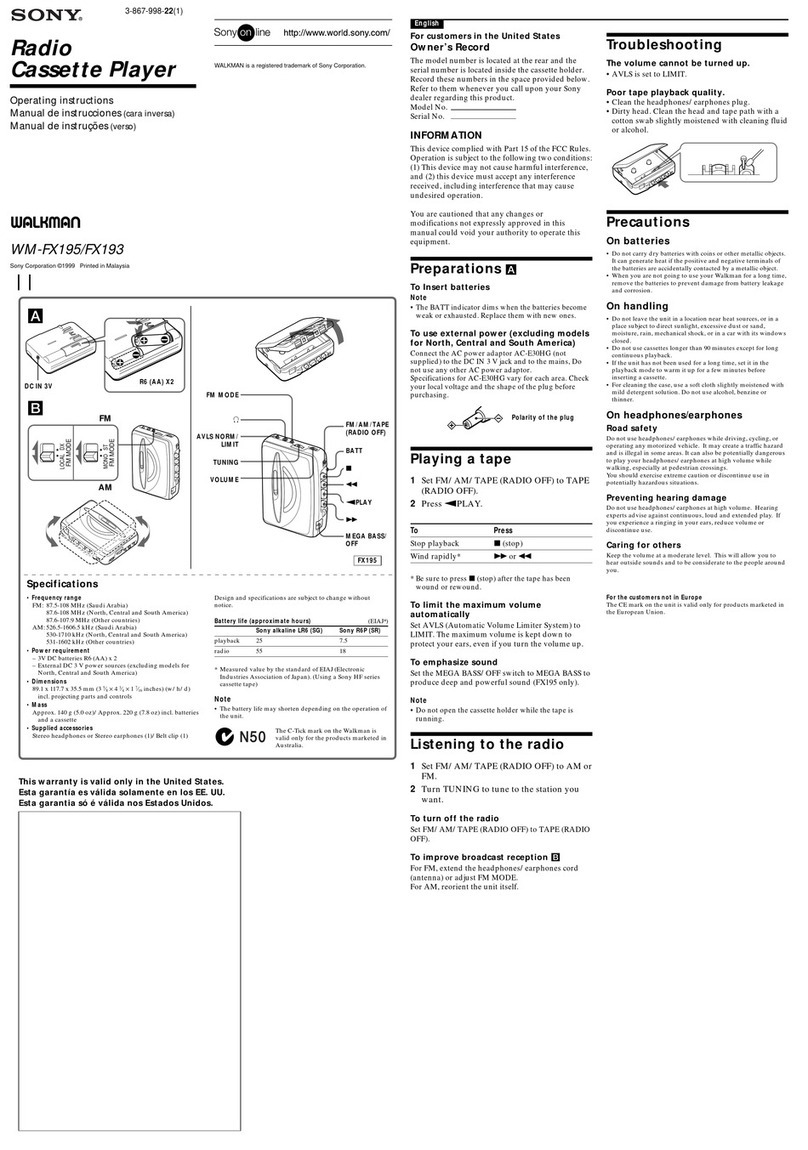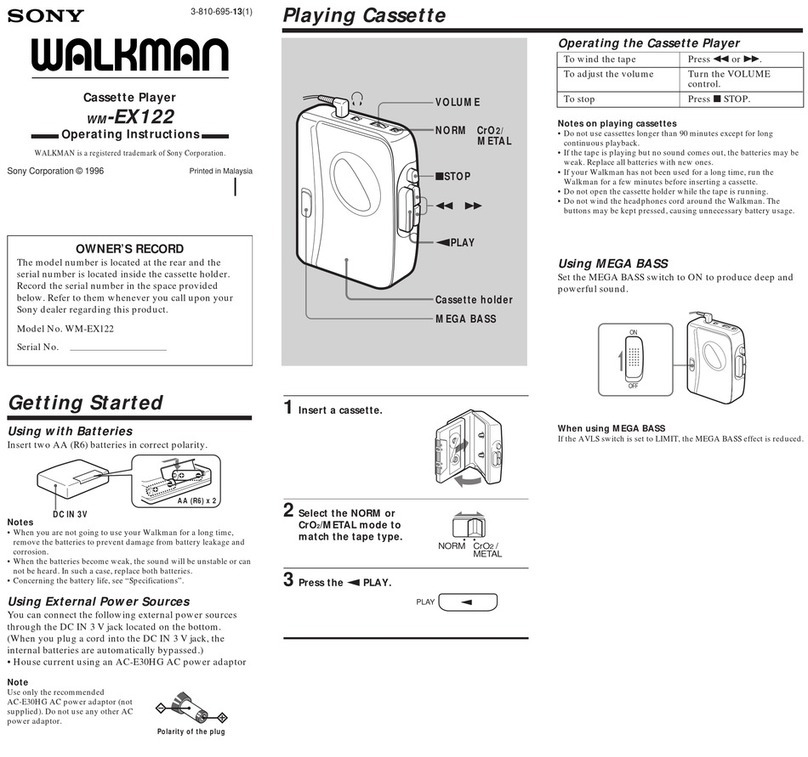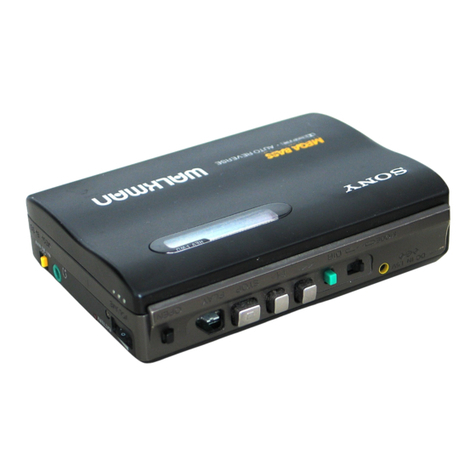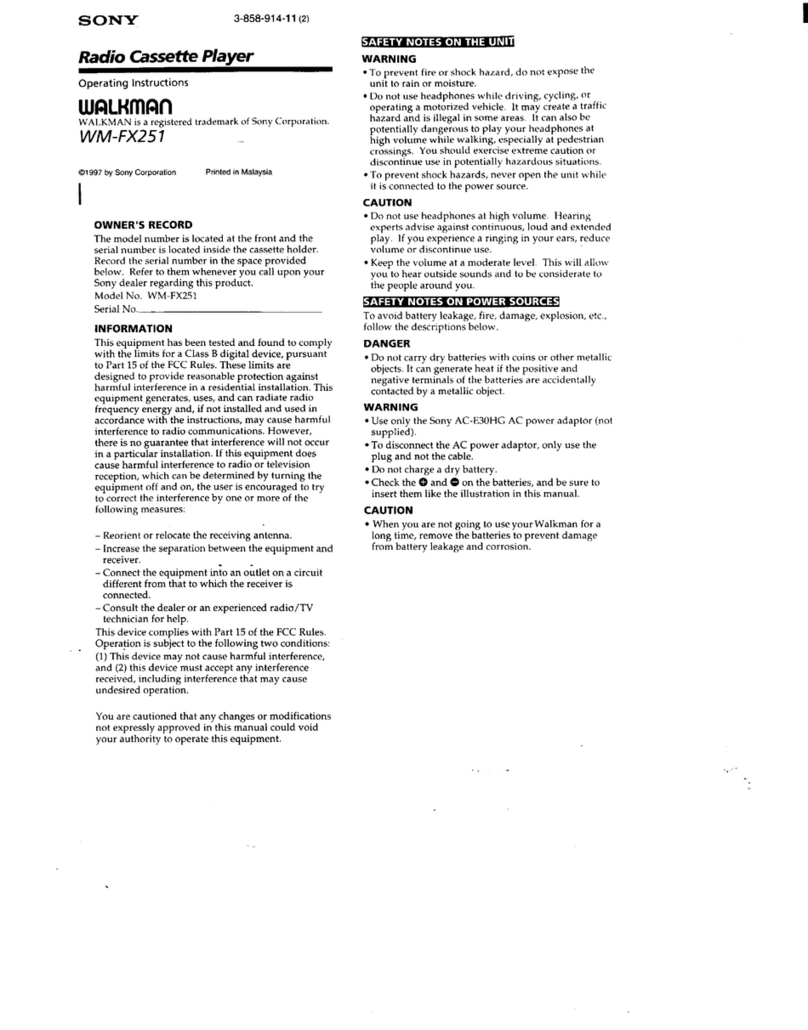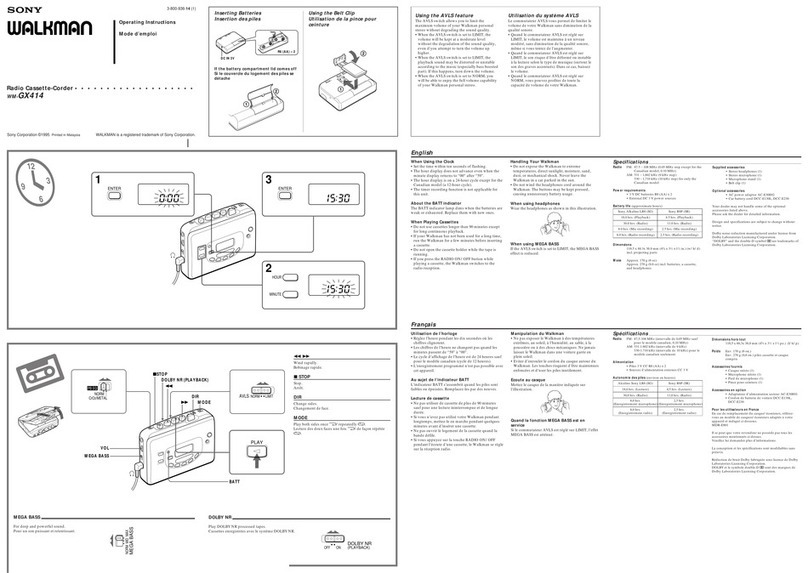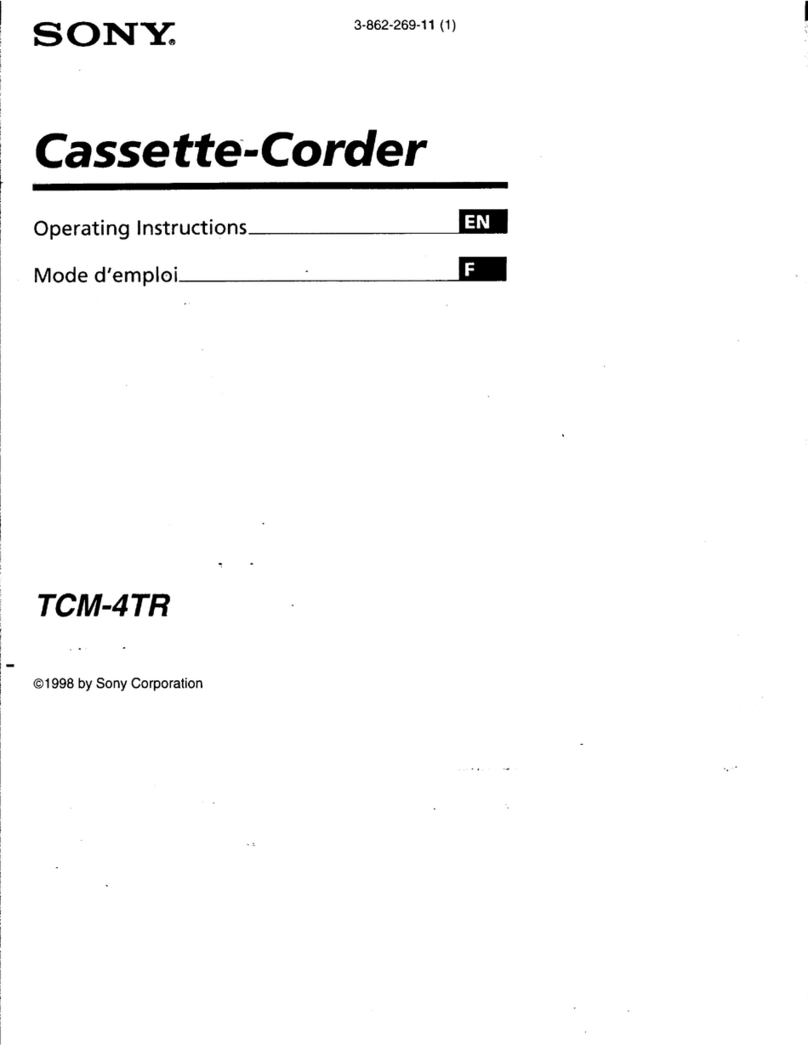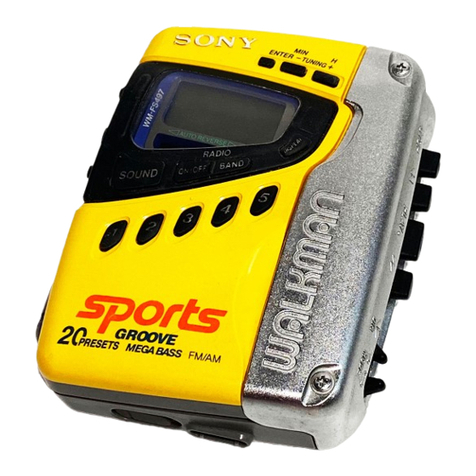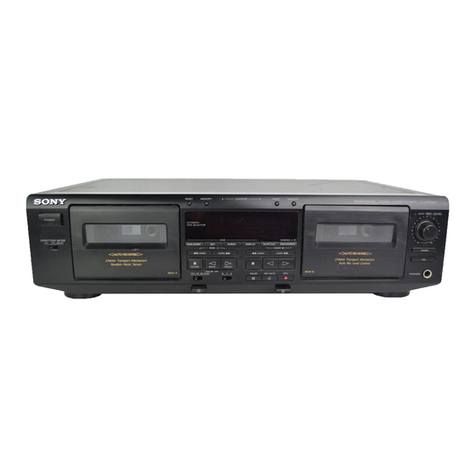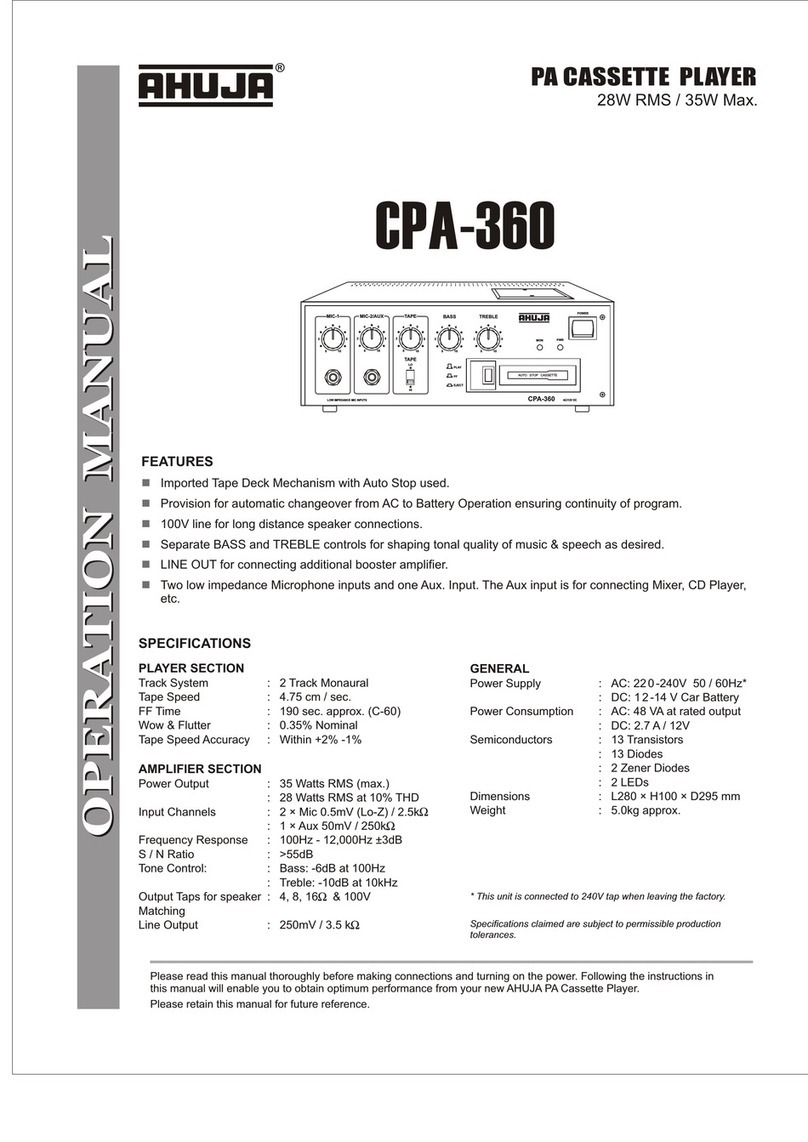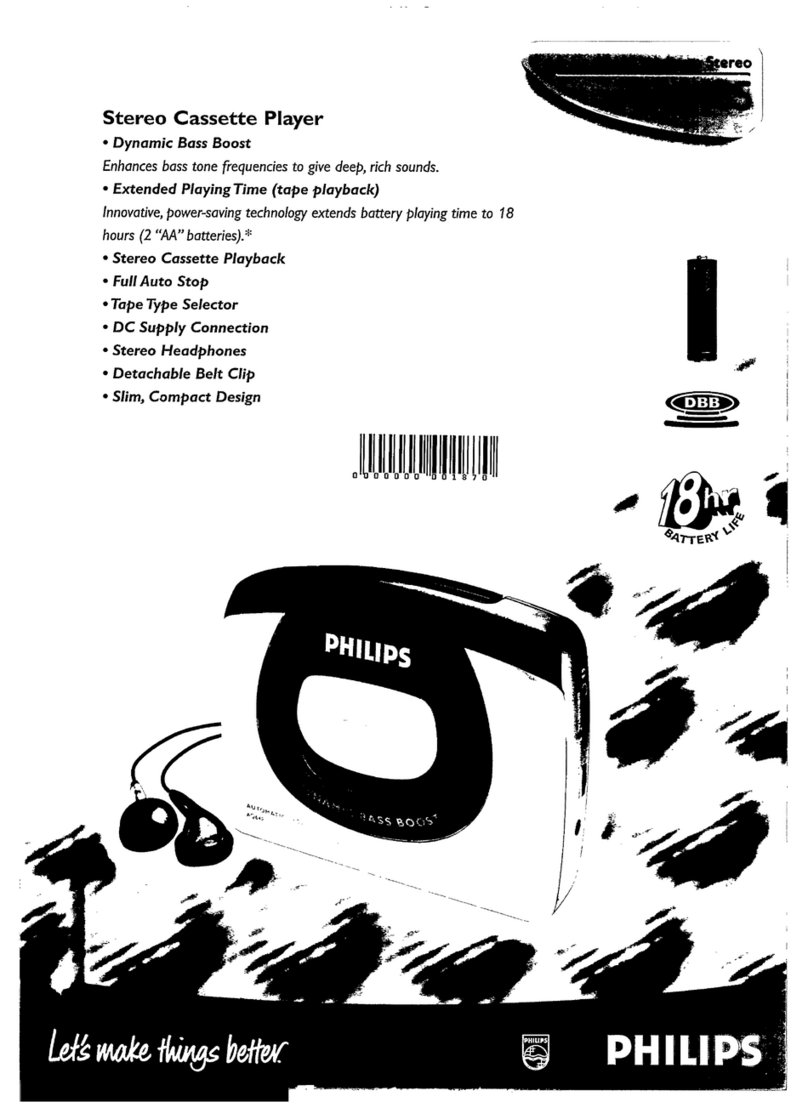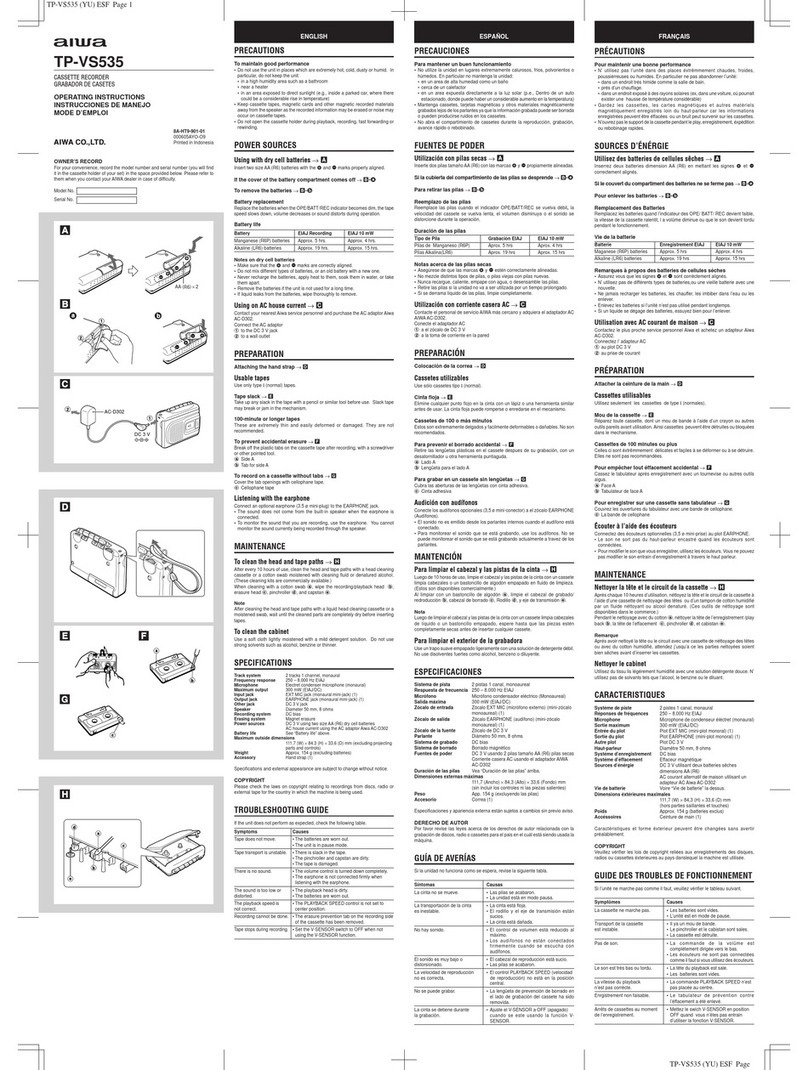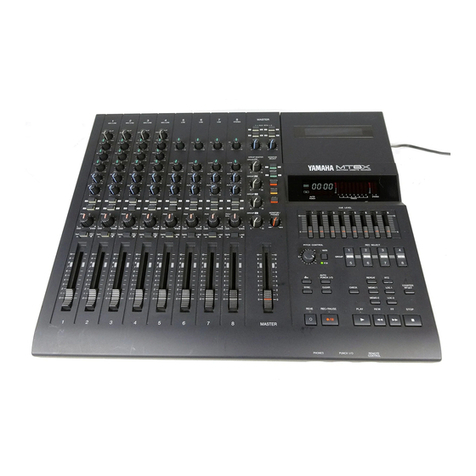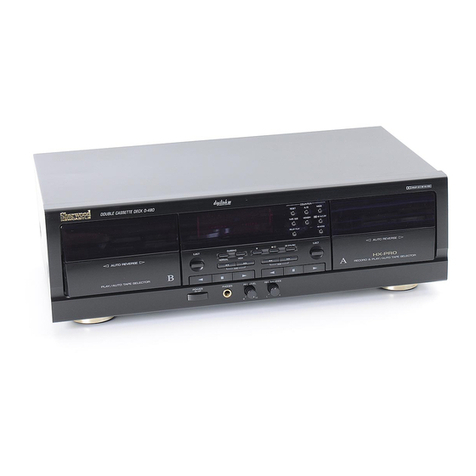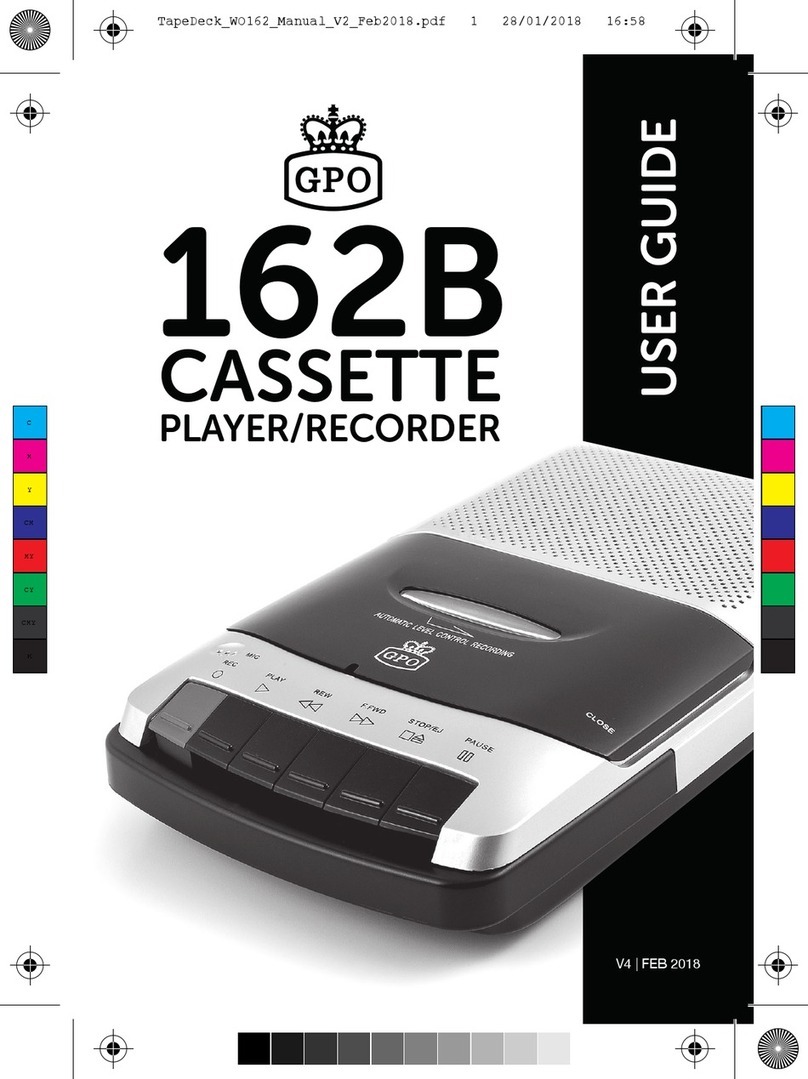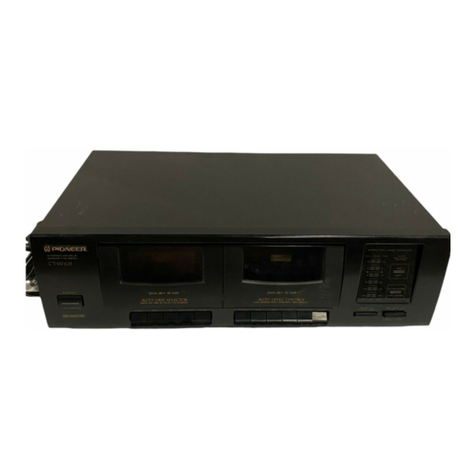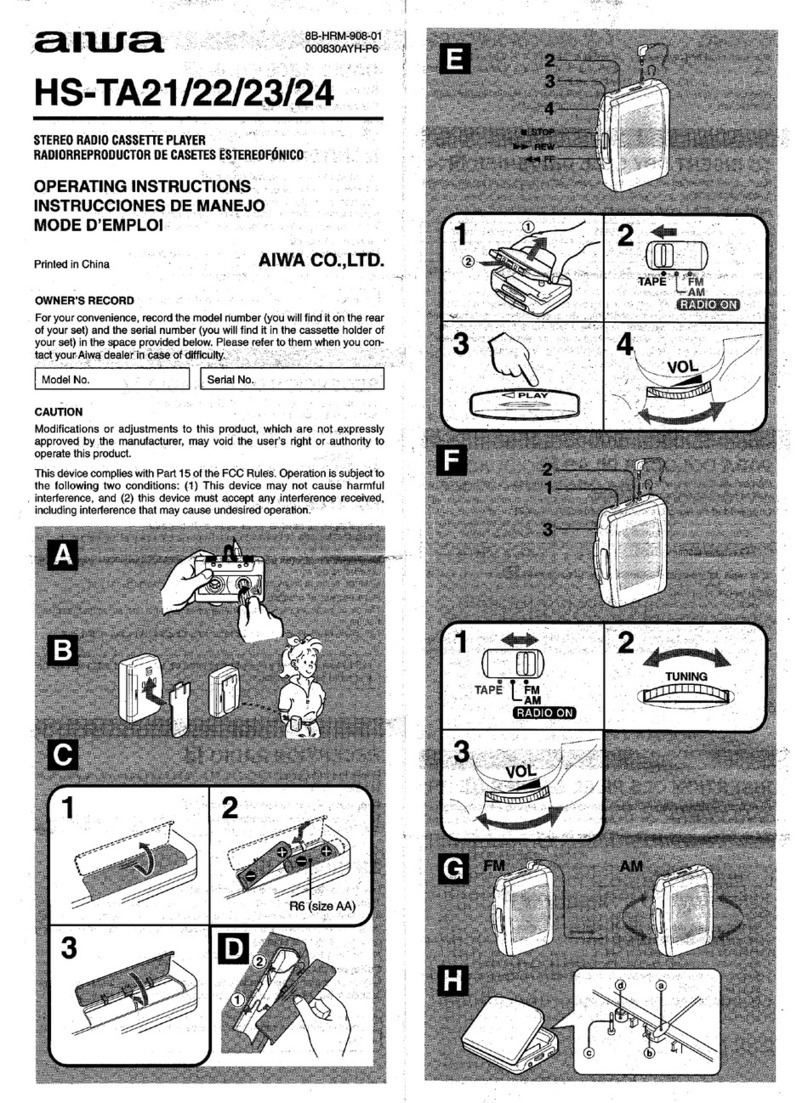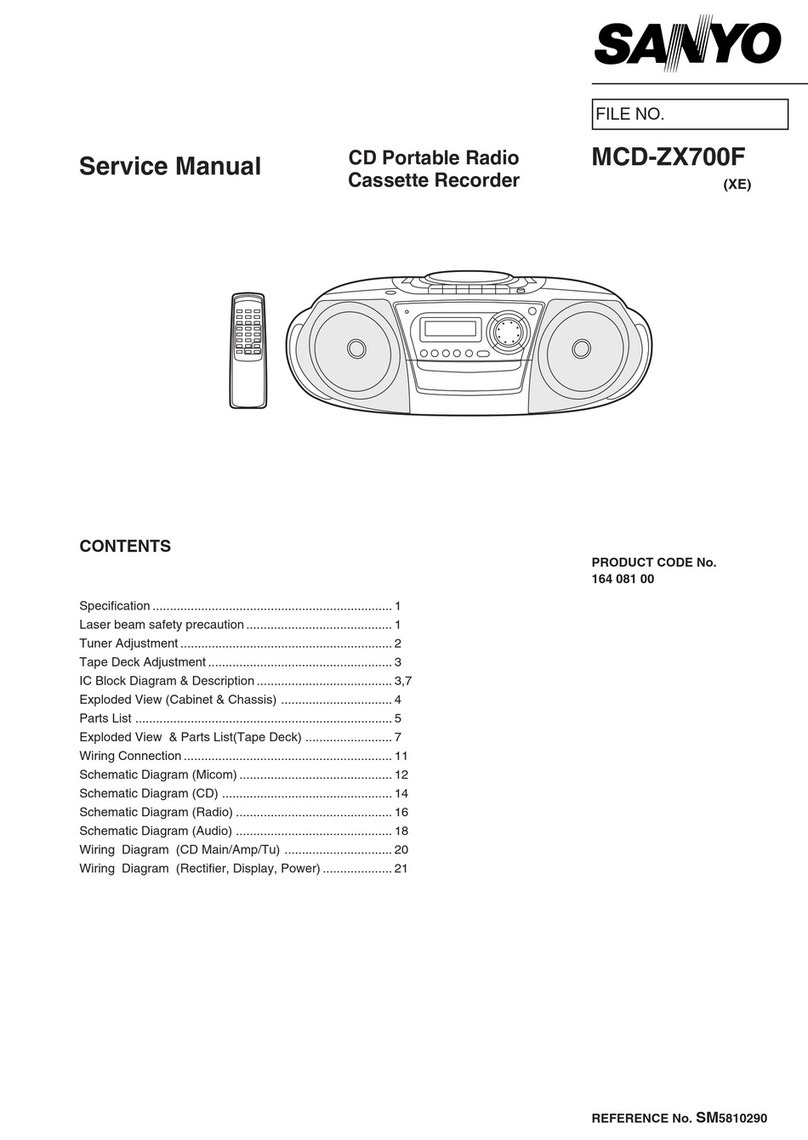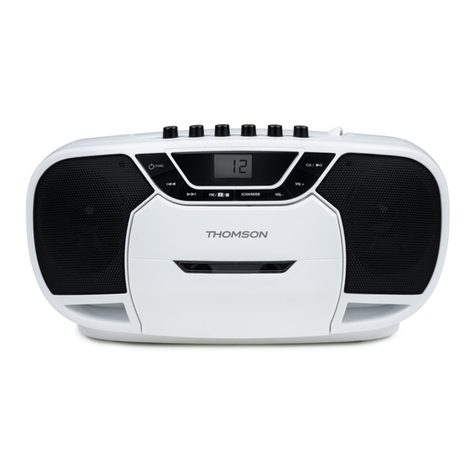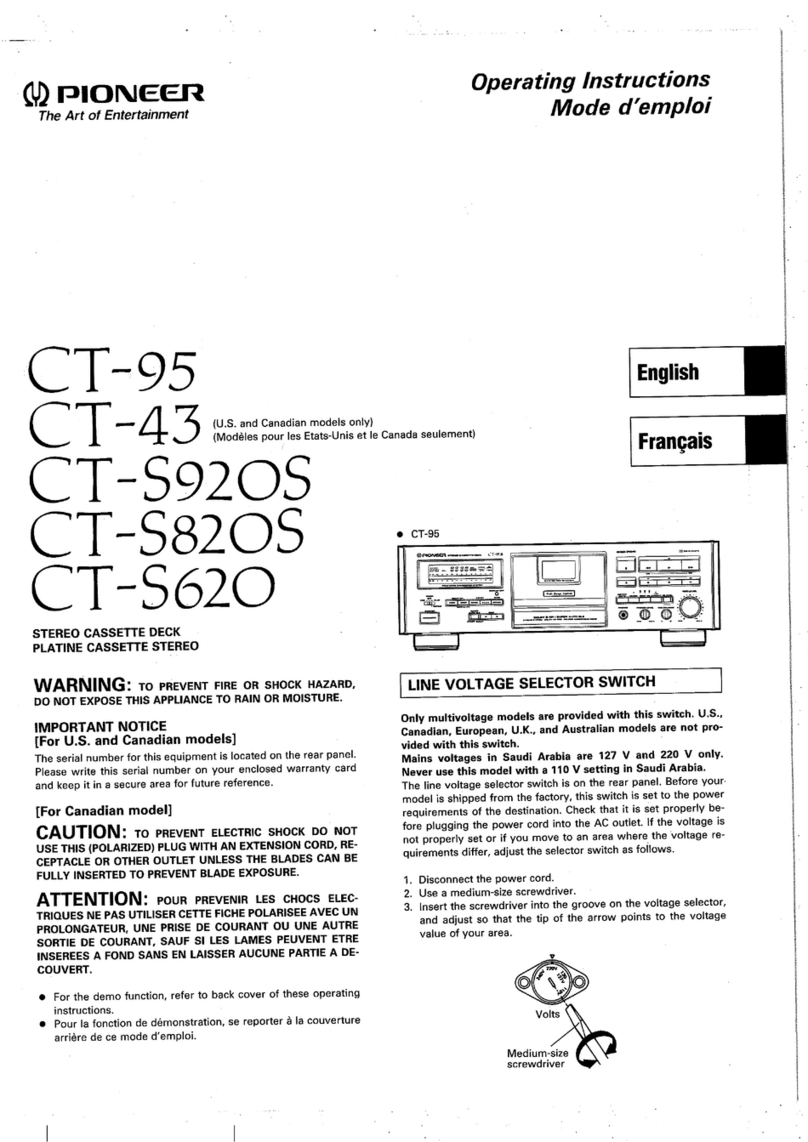
Table
of
Contents
Features
Getting
Started
Features
.......
Precautions
Installation
....
Connections
Identification
of
front
panel
Parts
..........
ccc
eteeereteeeteres
6
Playing
DaCK
..........
cc
ccessescceesecsessesesseeentenenererseesensaeesensetseneess
Playing
back
both
decks
in
succession
—
Relay
Play
.........
!
Skipping
blanks
—
Blank
Skip
0.2.0...
ceeeeeeeeeneereeneeees
9
Playing
back
automatically
after
rewinding
2
AUTO:
PAY
cis
ccisseseksnacoseseiclensivslssd
awelactodhe
beseestecstesteade
9
Locating
a
selection
—
Automatic
Music
Sensor
(AMS)
........:..2::ceeeereees
10
Locating
a
desired
position
using
the
counter
—
Memory
Play
..........ceccesceecsecesseeeereneeesneneenessseetsesezene
11
The
accuracy
of
the
digital
linear
counter
................++
11
Recording
Adjusting
the
recording
level
..
Adjusting
the
bias
according
to
the
tape
type
(deck
B
only)
...........-.--
.
What
is
the
Dolby
HX
PRO
system?
........:ceeeeeeees
14
To
protect
a
recording
Recording
the
same
source
on
both
decks
—
Simultaneous
RECOrdINg
.........c
sec
ceeeeeeeeeeeeteeeeeeees
15
Recording
on
both
decks
in
succession
—
Relay
Recording
Inserting
a
blank
space
during
recording
—
Record
MUting
.........
cece
ccceseecseseeeeeeeeeeneeeeereeeeeeeeens
16
Dubbing
Dubbing
a
tape...
eerie
Dubbing
only
desired
selections
..
Dubbing
only
desired
portions
Timer-Activated
Playback
and
Recording
Timer-activated
playback
and
recording
Maintenance
..
Specifications
....
Troubleshooting
guide
....
For
higher
quality
recording/playback
+
The
Dolby
HX
PRO*
system
which
improves
the
linearity
of
the
tape’s
high-range
response
during
recording.
«Band
C
type
Dolby
NR*
systems
which
reduce
tape
noise.
«
Bias
calibration
to
achieve
the
optimum
bias
current
setting
for
any
tape
(Deck
B
only).
For
your
convenience
«
Quick
reversing
at
the
end
of
a
tape
to
minimize
interruptions
during
playback
and
recording.
-
Automatic
tape
type
detection
during
playback
and
recording.
+
The
AMS,
Blank
Skip
and
Memory
Play
functions
which
provide
easy
access
to
a
desired
selection.
+
A
relay
function
for
long
recording
and
playback.
+
Auto
Play
function
which
automatically
starts
playback
after
tape
rewinding
to
start.
+
Timer-activated
playback
and
recording
through
the
use
of
an
optional
timer.
¢
Synchronized
dubbing
at
normal
or
high
speed.
+
Simultaneous
Recording
function
for
the
simultaneous
recording
of
the
same
source
to
cassettes
in
both
decks.
For
easier
operation
+
Twin
easy-to-read
digital
linear
counters
which
show
the
elapsed
recording
or
playing
time.
*
Dolby
noise
reduction
and
HX
Pro
headroom
extension
manufactured
under
license
from
Dolby
Laboratories
Licensing
Corporation.
HX
Pro
originated
by
Bang
&
Olufsen.
“DOLBY”,
the
double-D
symbo!
OO
and
“HX
PRO"
are
trademarks
of
Dolby
Laboratories
Licensing
Corporation.
